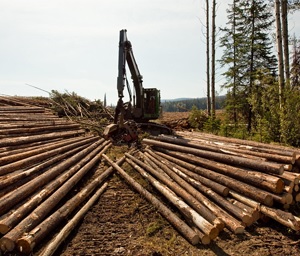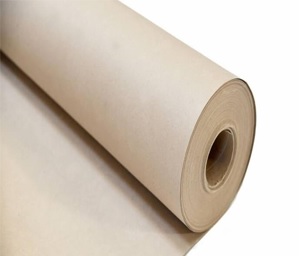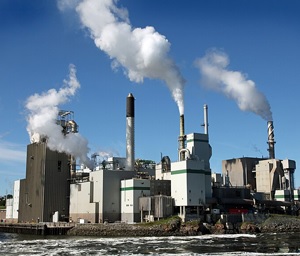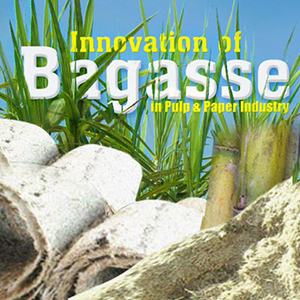Innovative Corrugation Solutions: Elevating the Pulp and Paper Industry
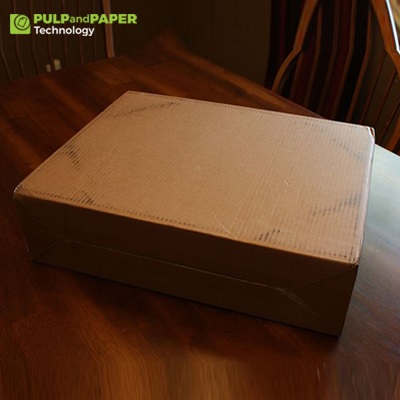
The pulp and paper industry is undergoing a significant transformation, driven by the need for sustainable forestry, carbon capture, and innovative corrugated surface solutions. As global demand for paper products continues to rise, particularly in e-commerce packaging and hygiene products, the industry must adopt practices that are both efficient and environmentally friendly. One of the key strategies is sustainable forest management, which ensures that forests are managed in a way that meets current needs without compromising the ability of future generations to meet theirs. This approach supports the industry's ability to produce essential items such as menstrual hygiene products and other hygiene products sustainably. Furthermore, the development of molecular bioproducts derived from forest resources highlights the innovative edge of the industry, offering new materials that can replace traditional, less sustainable options.
In addition to sustainable forestry, the adoption of carbon capture technology plays a crucial role in reducing the industry's carbon footprint. Carbon capture and storage (CCS) and carbon sequestration methods are being integrated into production processes to trap and store carbon dioxide, significantly mitigating the environmental impact. This is particularly important as the industry strives to meet the rising demands of e-commerce packaging and hygiene products. The innovative use of carbon capture not only aids in environmental preservation but also promotes the creation of molecular bioproducts that can be used in various applications, including enhancing the strength and durability of corrugated surfaces. By focusing on sustainable forest management and leveraging advanced carbon capture technology, the pulp and paper industry is positioning itself at the forefront of ecological innovation, ensuring that its growth is aligned with environmental sustainability.
Sustainable Forestry and Carbon Capture
Sustainable forestry is at the realm of the pulp and paper industry’s efforts to reduce its environmental footprint. By managing forests responsibly, the industry ensures a continuous supply of raw materials for various products, including hygiene products and e-commerce packaging, while maintaining biodiversity and ecosystem health. Sustainable forest management practices involve planting more trees than are harvested, protecting wildlife habitats, and using advanced techniques to enhance forest resilience. This approach not only supports the production of essential items such as menstrual hygiene products but also contributes to the development of molecular bioproducts, which offer sustainable alternatives to traditional materials. By prioritizing sustainable forestry, the industry can produce items with a corrugated surface that are both eco-friendly and durable, meeting the growing demand for e-commerce packaging.
One of the critical benefits of sustainable forestry is its role in carbon capture. Trees naturally absorb carbon dioxide from the atmosphere, storing carbon in their biomass—a process known as carbon sequestration. By maintaining healthy forests, the pulp and paper industry contributes significantly to carbon capture and storage, helping mitigate climate change. The integration of carbon capture technology within the industry enhances this benefit, ensuring that the carbon absorbed by trees is effectively stored and utilized. This not only aids in environmental preservation but also supports the production of hygiene products and molecular bioproducts that incorporate sustainable practices. As the demand for e-commerce packaging and menstrual hygiene products continues to rise, the industry's commitment to sustainable forest management and innovative carbon capture methods positions it as a leader in both ecological responsibility and product innovation.
Corrugated Surface Innovations
Corrugated surface innovations are revolutionizing the pulp and paper industry, particularly in the realm of e-commerce packaging. The unique corrugated surface provides unparalleled strength and durability while remaining lightweight, making it ideal for shipping and protecting goods. Innovations in this area have led to the development of more robust and environmentally friendly corrugated surface products, which are essential for the expanding e-commerce packaging sector. Advanced manufacturing techniques ensure that these products use fewer resources and generate less waste, aligning with principles of sustainable forestry and sustainable forest management. This sustainable approach not only benefits the environment but also supports the production of hygiene products and menstrual hygiene items, which require durable yet eco-friendly packaging solutions.
The integration of carbon capture technology in the production of corrugated surface materials further enhances their environmental credentials. By utilizing carbon capture and storage methods, the industry can significantly reduce its carbon footprint. This process involves the absorption of carbon dioxide during the production phase, contributing to carbon sequestration efforts. The use of molecular bioproducts in the manufacturing process also adds to the sustainability of corrugated surface materials, as these bioproducts are derived from responsibly managed forests. Such innovations ensure that e-commerce packaging not only meets consumer demands for strength and reliability but also aligns with the industry's broader commitment to sustainable forestry and carbon capture initiatives. By continuing to innovate in corrugated surface technology, the pulp and paper industry can support a sustainable future while providing essential products for modern commerce and everyday use.
Carbon Capture Technology in the Industry
To further enhance their environmental credentials, many pulp and paper companies are investing in carbon capture technology. This technology involves capturing carbon dioxide emissions from manufacturing processes and either storing it underground or utilizing it in other industrial applications. The integration of carbon capture technology with sustainable forestry practices creates a powerful synergy. Carbon capture and storage (CCS) systems are becoming increasingly common, helping the industry achieve significant reductions in greenhouse gas emissions. This approach not only benefits the environment but also supports the industry's commitment to producing hygiene products and menstrual hygiene items in a more sustainable manner. By implementing these technologies, companies can ensure that the production of corrugated surface materials for e-commerce packaging is both eco-friendly and efficient.
By integrating carbon capture technology with sustainable forestry practices, the pulp and paper industry can create a closed-loop system where carbon is absorbed by forests, used in production, and then recaptured and stored, minimizing the overall carbon footprint. This process involves the natural carbon sequestration capabilities of trees, enhanced by sustainable forest management techniques that maintain healthy and productive forests. The captured carbon can then be used in the production of molecular bioproducts, further reducing reliance on fossil fuels and enhancing sustainability. This closed-loop system supports the industry's goals of producing durable corrugated surface materials for e-commerce packaging and other products while adhering to principles of sustainable forestry. By embracing both carbon capture technology and sustainable forest management, the pulp and paper industry can lead the way in environmental stewardship and innovation.
Hygiene Products and Menstrual Hygiene
The demand for hygiene products, including those for menstrual hygiene, is growing worldwide. The pulp and paper industry plays a crucial role in meeting this demand through the production of high-quality, sustainable products. Innovations in this sector focus on using renewable resources and environmentally friendly manufacturing processes to produce hygiene products that are both effective and sustainable. By leveraging sustainable forestry and sustainable forest management practices, the industry ensures a steady supply of raw materials that minimize environmental impact. These practices involve planting more trees than are harvested and protecting natural habitats, thereby supporting the production of menstrual hygiene products that are safe for both consumers and the planet. Additionally, the use of molecular bioproducts derived from sustainable sources further enhances the sustainability and effectiveness of these products.
Incorporating carbon capture technology into the production of hygiene products also plays a significant role in reducing the industry's carbon footprint. Carbon capture and storage (CCS) systems are integrated into manufacturing processes to trap carbon dioxide emissions, contributing to overall carbon sequestration efforts. This not only mitigates the environmental impact but also aligns with the industry's commitment to sustainability. By combining carbon capture with sustainable forestry practices, the pulp and paper industry can produce hygiene products and menstrual hygiene items that are both eco-friendly and efficient. The industry's innovations extend beyond hygiene products to include the development of durable corrugated surface materials for e-commerce packaging, all while adhering to principles of sustainable forest management. This holistic approach ensures that every product, from menstrual hygiene items to e-commerce packaging, is produced with a minimal environmental footprint, supporting global sustainability goals.
E-Commerce Packaging
The exponential growth of e-commerce packaging is fueled by the increasing trend of online shopping. This sector demands packaging solutions that are not only durable and lightweight but also sustainable. Innovations in corrugated surface packaging have resulted in the development of materials that offer excellent protection for goods while minimizing environmental impact. The pulp and paper industry is at the forefront of these innovations, leveraging sustainable forest management practices to ensure a continuous and responsible supply of raw materials for e-commerce packaging. Additionally, integrating carbon capture technology into production processes further enhances the industry's ability to create e-commerce packaging that is both effective and eco-friendly.
By leveraging sustainable forest management practices, the pulp and paper industry can produce e-commerce packaging that meets the stringent requirements of the modern market. These practices involve planting more trees than are harvested, protecting wildlife habitats, and using advanced techniques to enhance forest resilience. The integration of carbon capture technology ensures that the industry not only meets the demands for durable and effective e-commerce packaging but also contributes to carbon sequestration efforts, thereby reducing its overall carbon footprint. This holistic approach not only benefits the environment but also aligns with consumer preferences for sustainable and environmentally conscious packaging solutions. As online shopping continues to thrive, the pulp and paper industry's commitment to sustainability in e-commerce packaging remains crucial for meeting the needs of both businesses and consumers while preserving the planet for future generations.
The Future of the Pulp and Paper Industry
The future of the pulp and paper industry hinges on its ability to innovate and embrace sustainable practices. Central to this vision is sustainable forestry, which ensures a responsible approach to harvesting raw materials. By prioritizing sustainable forest management, the industry can maintain healthy ecosystems while meeting the growing demand for hygiene products, e-commerce packaging, and other paper-based goods. Additionally, the adoption of carbon capture technology is vital for reducing the industry's carbon footprint. Implementing carbon capture and storage systems allows the industry to trap and store carbon dioxide emissions, contributing to carbon sequestration efforts and overall environmental sustainability.
Innovations in the development of molecular bioproducts further enhance the industry's trajectory towards a more sustainable future. These bioproducts, derived from renewable sources, offer eco-friendly alternatives for various applications within the pulp and paper industry. As the demand for menstrual hygiene products and e-commerce packaging continues to rise, leveraging molecular bioproducts becomes imperative for meeting consumer needs while minimizing environmental impact. The industry's commitment to sustainable forestry, carbon capture, and molecular bioproducts underscores its dedication to long-term sustainability and responsible resource management. By embracing these practices and innovations, the pulp and paper industry can thrive in a rapidly evolving global landscape while contributing positively to environmental conservation efforts.
Conclusion:
In conclusion, the pulp and paper industry is experiencing a transformation propelled by innovative corrugation solutions that integrate advanced technologies and sustainable practices. This evolution is driven by a strong emphasis on sustainable forestry, ensuring that raw materials are sourced responsibly and ecosystems are preserved for future generations. The adoption of carbon capture technology and carbon capture and storage systems further reinforces the industry's commitment to environmental responsibility, as it actively works towards reducing carbon emissions and contributing to carbon sequestration efforts. These initiatives not only elevate product quality but also demonstrate the industry's proactive stance in mitigating its environmental impact.
As the demand for hygiene products and e-commerce packaging continues to escalate, the pulp and paper industry's focus on sustainability becomes increasingly vital. By incorporating molecular bioproducts derived from renewable sources, the industry not only enhances its product offerings but also aligns with consumer preferences for eco-friendly solutions. The integration of sustainable forest management practices, carbon capture technology, and molecular bioproducts positions the industry as a leader in environmental stewardship. Moving forward, this dedication to sustainability will be paramount in ensuring that the industry remains competitive, resilient, and environmentally responsible in the face of evolving global challenges.


